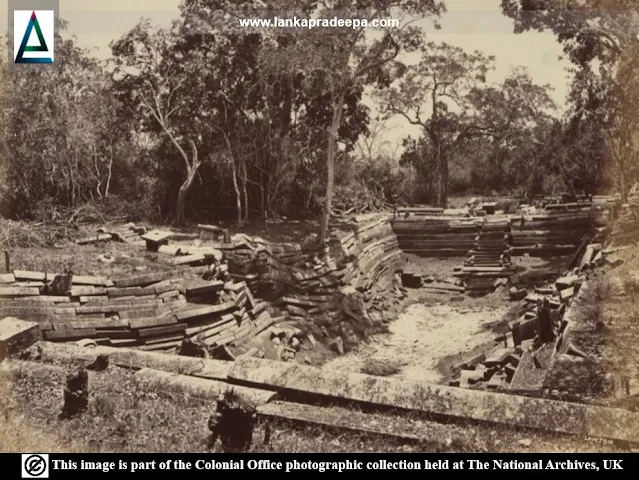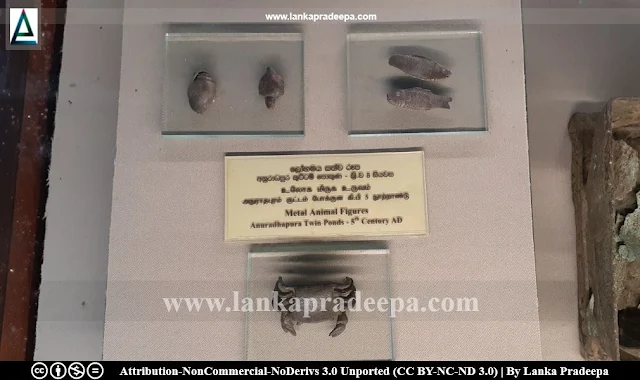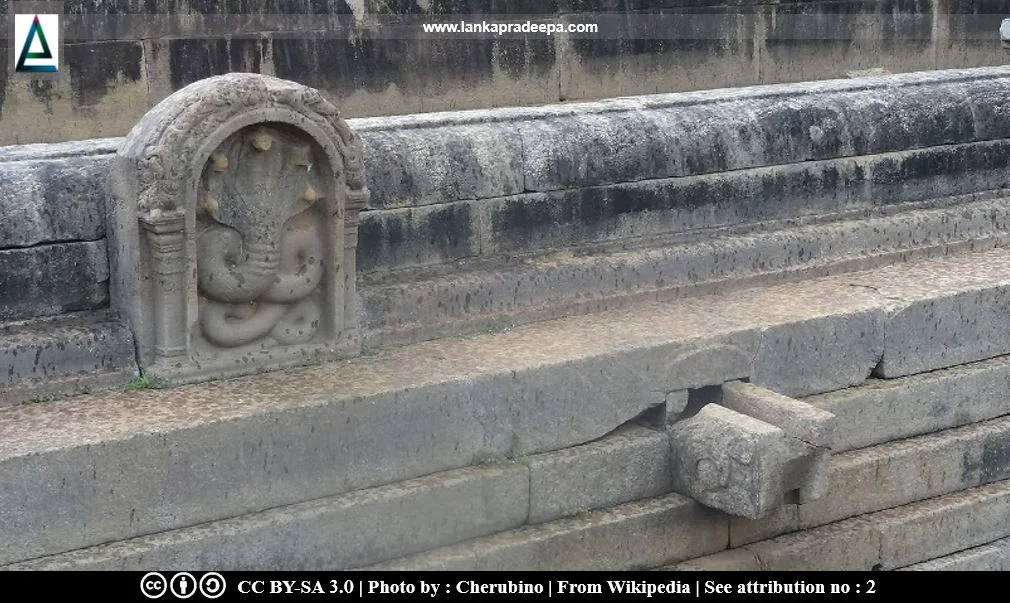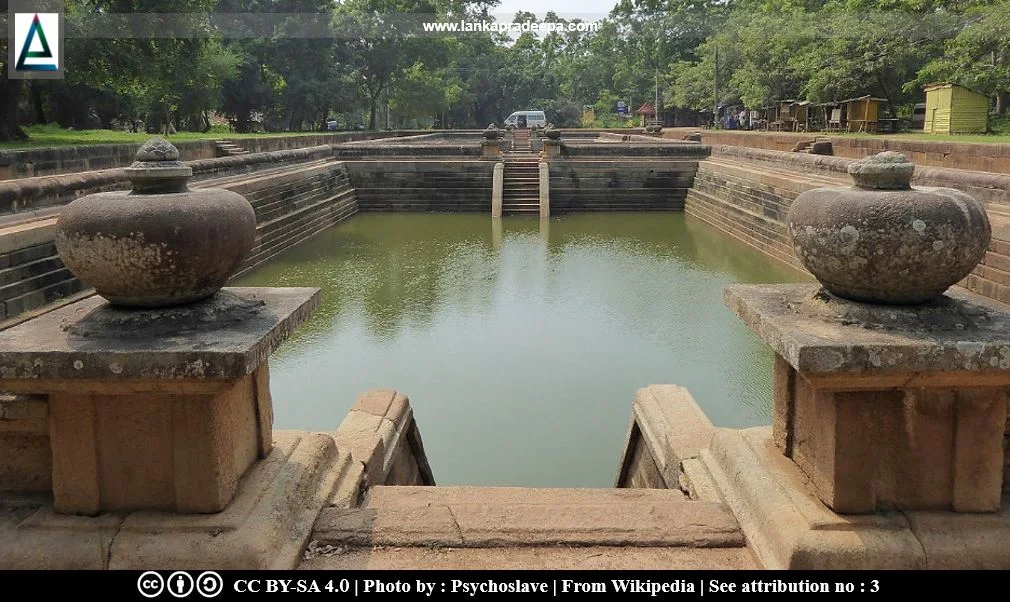
Kuttam Pokuna or Twin Ponds (Sinhala: කුට්ටම් පොකුණ; Tamil: குட்டம் பொக்குண) is a pair of dressed-stone pools situated near Abhayagiri Monastery premises in Anuradhapura District, Sri Lanka. It is considered one of the Sinhalese architect's most pleasing and impressive products (Fernando, 1990).
History
The pools are believed to have been constructed during the reign of King Aggabodhi I (564-598 A.D.) for the use of the Buddhist monks of the Kapara Mula fellowship (Jayasuriya, 2016). However, some say that the smaller pool has older features than the larger pool (Wikramagamage, 2004). Therefore, they believe that these two pools were not designed and constructed at the same time (Wikramagamage, 2004).
The pools

The two pools are rectangular in shape and built lower than the ground level (Wikramagamage, 2004). One of the pools is smaller than the other and both are separated by a narrow passage. Both pools have the same width but different lengths. The dimensions are getting smaller towards the bottom of the pools. At the ground level, the length of the larger pool is 132 ft while the smaller pool is 91 ft. (Jayasuriya, 2016). The width of both pools is 51 ft. (Jayasuriya, 2016). Flights of steps are seen on both ends of the pool and their entrances have been decorated with Punkalas (pots of abundance) placed on lotus pedestals. The steps that lead into the ponds in tiers have enabled monks to sit on them and bathe using pots or other utensils (Jayasuriya, 2016).
Both pools are still functional. In ancient times, the smaller pool was fed by a water source that came from the north and a cistern sluice (a silt trap) that purifies the water draining into the pond had been linked with it (Jayasuriya, 2016; Wikramagamage, 2004). The water is poured into the pond through a stone-made spout (Jayasuriya, 2016).
A sculpture depicting a five-hooded Naga (cobra) under the Makara Thorana (dragon arch) is found at the pool premises and it is considered a masterpiece (Wikramagamage, 2004). It is assumed by scholars that in ancient times there was a belief among the locals that the divine Nagas have a connection with water (Jayasuriya, 2016; Wikramagamage, 2004). Therefore, ancient people may have tended to erect a figure of Naga near the water systems they built. Sculptures depicting Nagas have been found near many ancient reservoirs, and ponds in Sri Lanka (Jayasuriya, 2016; Wikramagamage, 2004).
Conservation

Before the intervention of the Department of Archaeology, one side of the southern pond had been rebuilt by the Public Work Department but it was unsuccessful (Fernando, 1990). Later, the ponds were excavated by the Department of Archaeology under the guidance of Prof. Senarath Paranavitana (Jayasuriya, 2016).
Dismantling of the stones of the northern pond was started in 1949 and a bronze statue of a female dancer was recovered during this process (Fernando, 1990). During the excavations, a metal pot containing some objects such as the figures of a frog, tortoise, crab, a couple of fish, and a metal conch was discovered under the foundation of the northern pond (Fernando, 1990; Jayasuriya, 2016). These artefacts are presently preserved at the Anuradhapura Archaeological Museum.


 .
.
Attribution
1) Twin ponds (Kuttam Pokuna) by Kondephy is licensed under CC BY-SA 4.02) Kuttam Pokuna 06 by Cherubino is licensed under CC BY-SA 3.0
3) Sri Lanka Photo022 by Psychoslave is licensed under CC BY-SA 4.0
4) SL Anuradhapura asv2020-01 img29 Kuttam Pokuna by A.Savin is under the Free Art License 1.3
References
1) Fernando, W.B.M., 1990. History of the Department of Archaeology, Sri Lanka 1930-1950. Wijesekara, N. (Editor in chief). Archaeological Department centenary (1890-1990): Commemorative series: Volume I: History of the Department of Archaeology. Department of Archaeology (Sri Lanka). pp.99-100.
2) Jayasuriya, E., 2016. A guide to the Cultural Triangle of Sri Lanka. Central Cultural Fund. ISBN: 978-955-613-312-7. pp.31-32.
3) Wikramagamage, C., 2004. Heritage of Rajarata: Major natural, cultural,
and historic sites. Colombo. Central Bank of Sri Lanka. pp.110-111.
Location Map
This page was last updated on 14 November 2023

